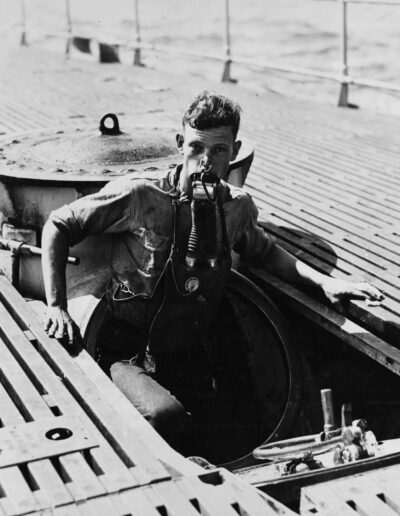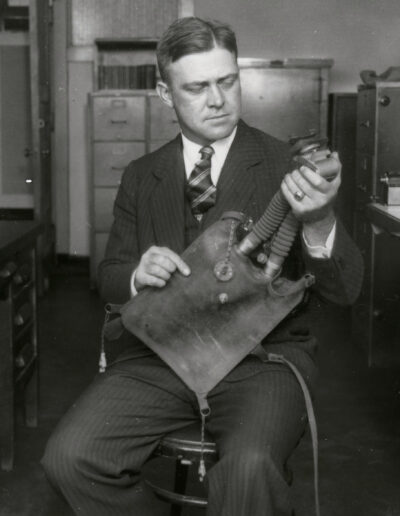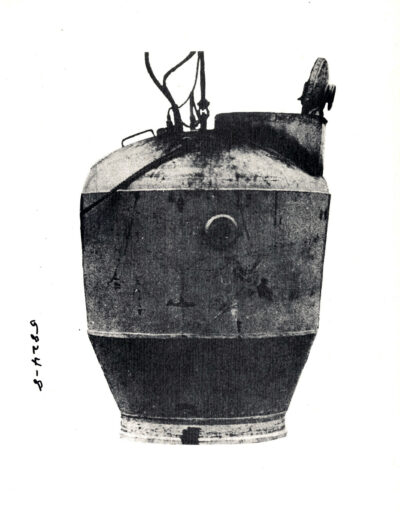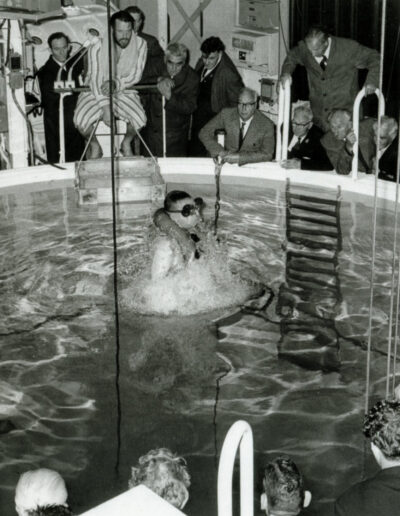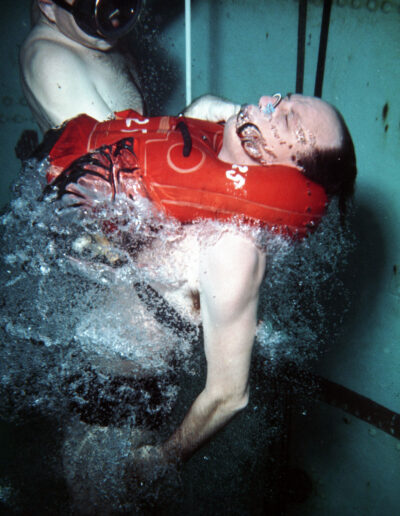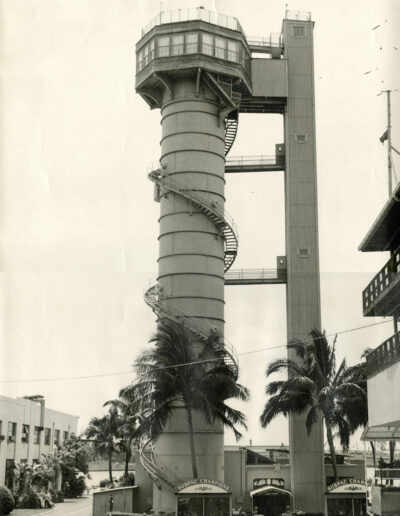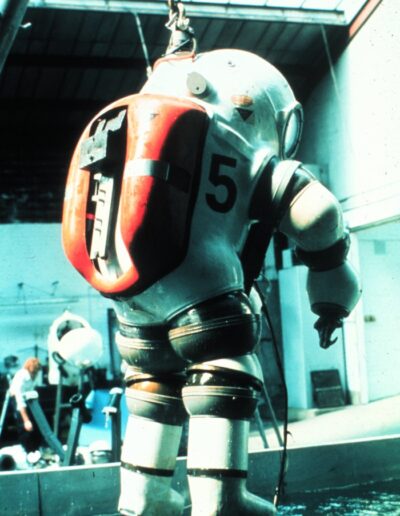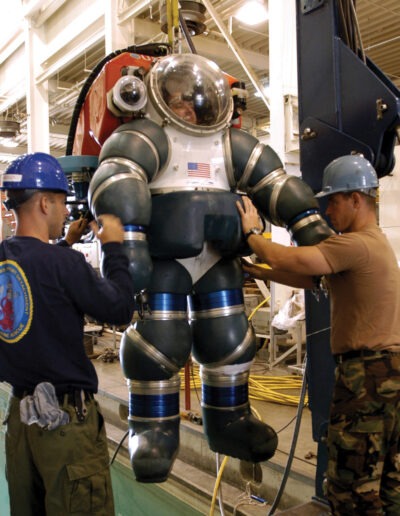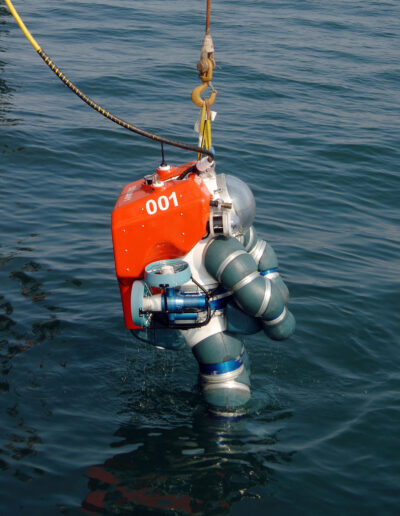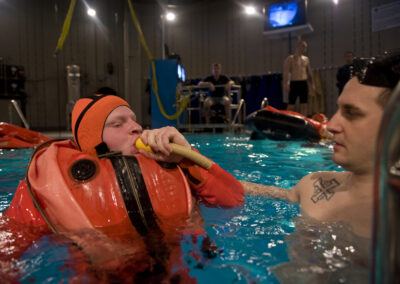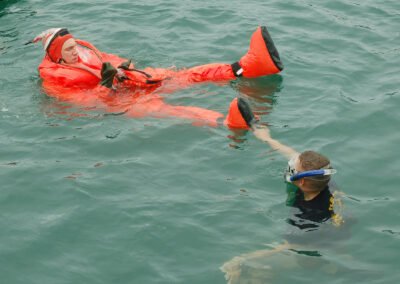Submarine Rescue and Escape
 The Challenge
The Challenge
The Navy lacked means of saving survivors of submarine accidents.
 The Solution
The Solution
The Navy founded NEDU to develop rescue and escape methods for trapped submariners. NEDU personnel designed and tested rescue and escape equipment and techniques. In the early 1970s, Submarine Development Group One assumed primary responsibility for submarine rescue after the Navy adopted new rescue vehicles called DSRVs. NEDU continued to support the rescue and escape program through evaluation of equipment and procedures.
Early Equipment
In 1928, NEDU tested a wearable escape device called a Momsen lung after its inventor, Lt. Charles Momsen. The Momsen lung provided the first successful means of submarine escape. It became the Navy’s primary escape method for over 25 years. A few years later, Lt. Cmdr. Allan McCann, working with Momsen, completed the design for a submarine rescue chamber. The chamber could be lowered to a downed submarine to raise survivors to the surface. NEDU evaluated and certified the rescue chamber in the early 1930s.
Buoyant Ascent Technique
In 1956, the Navy introduced a new approach to submarine escape, the buoyant ascent technique. NEDU developed and carried out the test program for the technique, which called for a submariner to continuously exhale while ascending to the surface. NEDU found this new approach to be safer than the Momsen lung, which could cause injury or death if used incorrectly.
JIM Suit
Commercial inventors designed the JIM suit, the first modern atmospheric diving suit (ADS), in the early 1970s. ADS maintain surface pressure internally and eliminate the need for decompression. NEDU evaluated the JIM suit in 1975 and concluded ADS would be valuable tools for submarine rescue missions. As a result, the Navy initiated development and use of ADS. ADS allow divers to investigate downed submarines and clear their hatches for rescue equipment.
SEIE (Survival) Suit
In more modern times, NEDU helped test protective suits for submariners escaping a disabled submarine. The submarine escape immersion equipment (SEIE) suit improves its wearer’s survivability by providing thermal protection and floatation while awaiting rescue.

